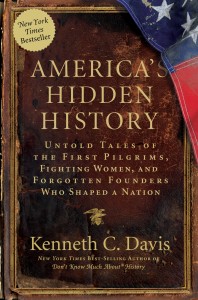A news report that a “Tea Party” convention planned for February shows signs of unraveling reminds me of another group of “tea baggers” from American History. They also came undone in late January. But the year was 1778.
[The news story about the Tea Party Convention: http://www.nytimes.com/2010/01/26/us/politics/26teaparty.html?src=tptw]
It began as a populist uprising against –surprise, surprise—the bankers and lawyers who were making the rules back in Boston, men derided as “thieves, knaves and robbers” by the average people of Massachusetts. During the first economic crisis in a nation then ruled by the Articles of Confederation, sweeping foreclosures threatened farms and businesses, unfair tax systems were crushing American families, and there was no credit to be had. Sound familiar? Plus ça change…
Fighting back, hundreds of these average men came together under the leadership of Revolutionary War veteran Daniel Shays and came to be called Shays’s Army. The politicians called them “insurgents.”
Many of the men, like Shays, were veterans of the Revolution and had fought in every battle from Bunker Hill to Yorktown. Some had suffered through the winter at Valley Forge. Now some of them had been told they couldn’t vote. So they began their second American Revolution in the winter of 1786 and the early winter of 1778. On January 25th, after a raging storm left four feet foot of fresh snow in the Berkshire hills, more than a thousand of these men – farmers, tradesmen, shopkeepers – marched on the federal arsenal in Springfield, hoping to take the artillery and muskets stored inside, and continue on to Boston to overthrow the state government.
Apparently, they believed these words from the Declaration of Independence:
“Governments are instituted among Men, deriving their just powers from the Consent of the Governed, that whenever any Form of Government becomes destructive of these Ends, it is the Right of the People to alter or abolish it . . .”
Lightly armed and poorly organized, the “Shaysites” were repulsed by a small militia army, bought and paid for by the power brokers of Massachusetts. Among those in power was patriot icon Samuel Adams, who said of the rebellious farmers,
“In monarchies, the crime of treason and rebellion may admit of being pardoned or lightly punished, but the man who dares rebel against the laws of a republic ought to suffer death..”
Indeed a few of the rebels did die that day in Springfield. Several volleys of grapeshot killed a handful of men; the others scattered in panic. More federal troops eventually rounded them up. Daniel Shays, an outlaw, made his way to the “Republic of Vermont,” not yet a state. (Eventually pardoned, he lived out the rest of his life as a struggling farmer in upstate New York.)
The “horrid and unnatural Rebellion and War,” as the Massachusetts legislature called the uprising, ended with a few small bangs and a whimper. And Americans killing each other.
Thomas Jefferson, hearing the news in Paris, wrote back to America,
“What signify a few lives lost in a century or two? The tree of liberty must be refreshed from time to time with the blood of patriots and tyrants. It is its natural manure.”
George Washington was not so philosophical. “Are your people mad?” an incredulous Washington wrote to one of his former aides in New England. The prospect of more Shays Rebellions provided the urgency for Washington, James Madison, and other “Framers” to collect in Philadelphia to draft the Constitution. The angry “teabaggers” of western Massachusetts had pressed America to become “a more perfect Union.”
“Shays’s Rebellion” was far from the first time populist anger boiled over violently in America. There had been numerous uprisings throughout colonial America in which the poor and powerless struck out at the earliest generation of American “Elites.” And populist anger has remained a constant throughout our history. It is anger born of economic dislocation, but is often fueled by darker streaks — race and religion have frequently stoked the coals of populist rage. And these tales are usually untold in our schoolbooks. They don’t fit the tidy picture of American History.
In the past, populist movements like the “Tea baggers” have usually flamed hot before burning out –co-opted or absorbed by the major parties. Whether the fractious and increasingly fractured “Tea Party” is one more of these flameouts remains to be seen. But the history of populist anger is a real one. And as the Senate race results in Massachusetts –scene of Shays’s Rebellion– recently proved, people are mad. The bloodletting may be symbolic this time. But Jefferson’s “Tree of Liberty” may be refreshed with more political bloodshed before too long.
You can read more about Shays’s Rebellion and its impact in America’s Hidden History